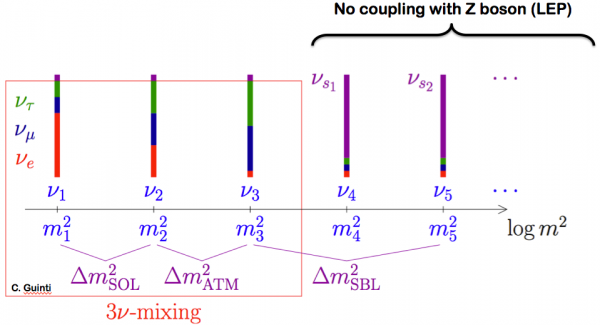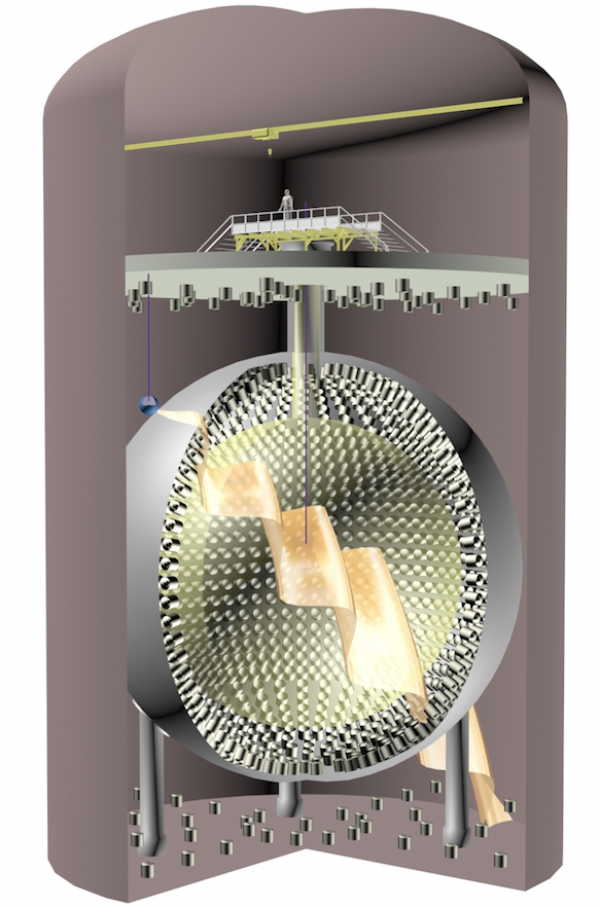Physics case
The overall picture of particle physics, the so-called Standard Model, has been recently probed by the discovery at CERN of the Higgs particle; it is consistent with the existence of three neutrinos. Oscillations between these neutrinos has been observed in many experiments and are already a compelling evidence of new physics beyond the Standard Model.
In 2011, while preparing the Double Chooz data analysis, the CEA low energy neutrino group reevaluated prediction of the reactor neutrino fluxes leading to an increase of the emitted flux by about 4%. Consequently the group revised the comparison of the latest with the measured rate of interactions in detectors located at 100 m or less from the cores and revealed the Reactor Antineutrino Anomaly. They proposed the interpretation of this anomaly by the existence of a new sterile neutrino state whose mass would be >0.1 eV/c2.
In addition other experiments reported anomalous results, such as the LSND and MiniBooNE accelerator experiments, the calibration of the Gallex and SAGE solar neutrino experiments. These results could be interpreted as the existence of a new neutrino state.
If confirmed the discovery of a fourth neutrino state would be of fundamental importance, forcing to modify deeply the so far successful Standard Model of particles.
Early phase: The CeLAND project
In 2012 the CEA low energy neutrino group proposed to test the 4th neutrino hypothesis with a PBq 144Ce antineutrino β-source deployed in a large low background liquid scintillator detector.
In a first stage the CEA low energy neutrino group and the KamLAND collaboration investigated the possibility to deploy a PBq 144Ce antineutrino generator in KamLAND (the CeLAND project). But it turns out not being feasible on a 5-year time scale, due to logistics constraints between Europe and Japan.
In consequence CEA and the Borexino collaboration unified their effort towards the deployment Cerium Antineutrino Generator next to the Borexino detector located at LNGS in Italy (Gran Sasso), an experiment called CeSOX or SOX.
The CeSOX Concept
The experiment consists in bringing close to the Borexino detector an antineutrino generator and let it in place, without manipulation for a period of 1.5 years. Characteristics of the detection of antineutrinos lead to the choice of the nuclei 144Ce (an isotope of Cerium) as the best candidate for the antineutrino generator (CeANG). In 2018 the CeSOX collaboration will deploy a 3.7-5.5 PBq 144Ce-based antineutrino generator at 8.5 m away from the Borexino detector, located at the Gran Sasso laboratory.
The existence of a 4th neutrino would manifest itself as a periodic modulation in the recorded distribution of the rare neutrino interactions inside the fiducial volume. This would be a smoking gun proving the existence of this new elementary particle. Otherwise, its absence would allow setting a very stringent limit on its existence.






